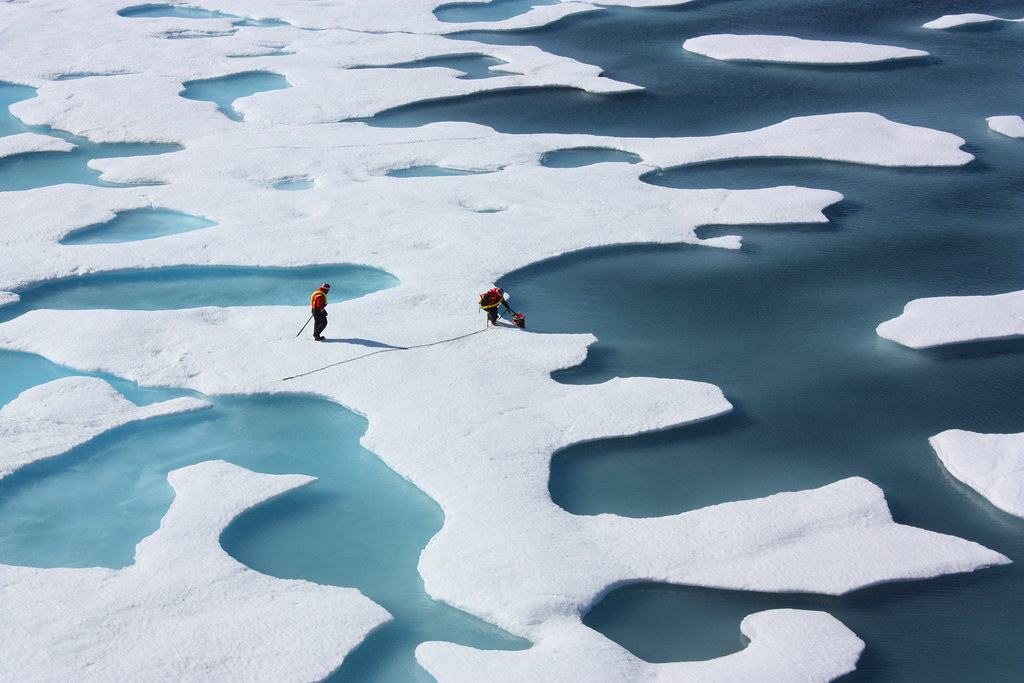The Oceans Are in Peril—and the IPCC Report Confirms It
During the U.N. General Assembly meeting in mid-September, the Intergovernmental Panel on Climate Change (IPCC), the international body for assessing climate science, released its Special Report on Oceans and the Cryosphere. The report provides the most detailed scientific review of how the world’s oceans and cryosphere—the frozen part of the planet—are responding to climate change. The results are not looking good.

Published by The Lawfare Institute
in Cooperation With

During the U.N. General Assembly meeting in mid-September, the Intergovernmental Panel on Climate Change (IPCC), the international body for assessing climate science, released its Special Report on Oceans and the Cryosphere. The report provides the most detailed scientific review of how the world’s oceans and cryosphere—the frozen part of the planet—are responding to climate change. The results are not looking good. In line with previous estimates, the new report drives home what scientists and policymakers already knew: The world’s oceans are in dire shape, and the actions taken in the coming years will have an outsized impact on the consequences of global climate change for centuries to come.
Some key findings from the report include:
- Sea level is rising at a rate of 3.6 mm per year—about twice the rate of the 20th century—and accelerating.
- The ocean has absorbed more than 90 percent of the excess heat in the climate system, resulting in rising water temperatures, marine heat waves and changing marine environments.
- The ocean has absorbed between 20 percent and 30 percent of human-induced carbon dioxide emissions since the 1980s, resulting in ocean acidification and killing off of marine species.
- Arctic ice and permafrost, which hold about twice the amount of carbon currently in our atmosphere, continue to thaw and release carbon.
- Previously once-per-century extreme sea-level events will likely occur yearly between now and 2050.
These processes will continue as positive feedback loops—as the ocean absorbs excess heat, more ice melts, which raises sea levels and releases more carbon into the atmosphere. Soon, the ocean will be at its capacity for absorbing excess heat and carbon dioxide, and the world will no longer have the benefit of oceanic mitigation effects on climate change. Even if humanity reduces greenhouse emissions to limit global temperature rise to “well below two degrees,” the goal laid out in the 2015 Paris climate agreement, we are still facing at least a 50 percent loss in Arctic sea ice, 25 percent loss of permafrost and 30-60 mm of sea level rise by 2100. These are the conservative estimates.
The effects of rising sea levels, ocean acidification, marine heat waves and other climate change-induced changes on our oceans and cryosphere have been well understood by the U.S. national security community for years (see Lawfare’s previous coverage of the threats posed by climate change). The Naval Facilities Engineering Command (NAVFAC) released a Climate Change Installation Adaptation and Resilience Handbook in 2017 to help planners address challenges from climate change. The Department of Defense includes assessment of climate-related threats in the National Defense Authorization Act, and the 2019 Worldwide Threat Assessment from the director of national intelligence warned of climate change as a worldwide threat.
However, the IPCC report shows that the rates at which these changes are happening are rapidly increasing, and current adaptation and mitigation measures will not be enough. As positive feedback loops and lack of action on the climate crisis contribute to increased warming, the United States will face new dilemmas at home and around the world.
Melting Sea Ice and Access to the Arctic
The Arctic is warming two to three times faster than the rest of the planet, causing massive glacier-cleaving events and decreases in sea ice. The region may have its first ice-free summer by 2050. In addition to rising sea levels and other effects, the loss of ice has made the Arctic more navigable, transforming it into America’s “fourth coast”—requiring increased protection and decisions about resource extraction, commercial transport and international relations.
Perhaps the most notable impact is Russia’s increased exploration and use of the Arctic. About half of the Arctic coastline is within Russia, and the country’s Exclusive Economic Zone (EEZ)—the oceanic waters in which the country has sovereign rights and exclusive jurisdiction over resource use—expands 200 miles from its territorial coastal boundary. Russia has increasingly been expanding its presence in the Arctic, for commercial shipping routes—such as the Northern Sea Route (NSR), which will enrich both Russia and China—and resource extraction, mostly in oil and gas reserves. The country has invested billions of dollars in upgrading bases along the NSR, and the Russian government has passed legislation to ensure its monopoly over managing access to the NSR, confirming Russian oversight of any Arctic shipping that may occur.
Russia has also expanded its military presence. The Arctic, historically a “zone of peace,” is becoming a militarized zone, in which it is possible for both Russia and the United States to establish military bases and potential nuclear weapons launch sites. Russia is building new bases, deploying advanced radar technology and missile systems, and increasing air and naval activity in the region. While the official reason for these developments is control over the shipping route, the expansion creates a new threat to the United States. The Russian military announced at the end of August that it had discovered five new islands in the Arctic, and it has deployed the country’s Northern Fleet to conduct topographic maps and report on the islands. The melting cryosphere will likely continue to reveal new islands previously trapped in ice, allowing Russia to expand its territorial claims and potential military presence far beyond its current boundaries.
International Fisheries and Maritime Boundaries
As the Russia example indicates, rising sea levels have an effect on the EEZs of coastal countries. These zones and the rules regulating them are laid out in the United Nations Convention on the Law of the Seas. However, the convention leaves unanswered many questions, which are becoming crucial as climate change alters the seascape. As sea levels rise and coastal zones are inundated, do EEZs retreat to be 200 miles from the new coastline? As ocean warming and acidification affect fish populations, does the international community have any obligation to regulate within EEZs to prevent any one nation from overfishing near the dividing line between EEZs?
As climate change alters the biodiversity of the oceans, marine populations become threatened or go extinct; as migration patterns change because of rising ocean temperatures and currents, competition for finite and mobile resources like fish will increase; and as maritime borders potentially begin to shift because of sea level rise, conflict is even more likely to occur. Many small island nations depend heavily on fishing and ocean-related activities to sustain their economies and provide sustenance for their populations, and the IPCC report has found with high confidence that negative impacts have already occurred for indigenous populations and local communities that are dependent on fisheries. The IPCC expects the maximum catch potential of fisheries to decrease by 20-24 percent by the end of the 21st century if greenhouse gasses continue to be emitted unabated.
Poor management of fisheries, combined with the biophysical changes caused by climate change, also often lead to increased illegal, unreported and unregulated (IUU) fishing. IUU fishing not only internally destabilizes countries by creating more competition for resources, but it also can distort international markets and threaten worldwide ocean ecosystem health. While these consequences have traditionally been recognized by the National Ocean and Atmospheric Administration, the Department of Defense has rightly started taking an interest in this area, as recent reports have outlined the security stakes of the issue. The IPCC stresses that the positive feedback cycles will increase the biophysical effects that lead to these risks—both directly, to ecological and food security, and indirectly, to geopolitical stability and international markets.
In addition, the new report confirms the need for the national security community to continue acting, and quickly, in many previously identified ways to help protect the United States from the most impacts of climate change. These include:
- Adapting navy bases and nuclear arsenals to rising sea levels and more violent storms.
- Preparing military installations abroad to deal with altered hydrological cycles, including drought and flooding.
- Addressing migration, specifically from Central America, through the southern U.S. border—a process that will continue as sea levels rise; storms worsen; and droughts plague countries like Honduras, El Salvador and Guatemala.
The results of the new IPCC report are not surprising, but they are worrisome. Action on climate change in the next 10 years will prove crucial to saving the oceans and minimizing security threats for the U.S. both at home and abroad.





